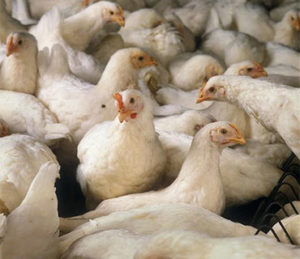Friends of farmers who have bred laying hens on a large scale know that when laying hens are raised in automatic layer cage system, they will be beaked when they are still young. The so-called beak cutting is to use professional methods to cut off the tip of the layer when the layer is still young. Many people don’t quite understand, why cut off the chicken’s mouth?
Most of the laying hens did not show much abnormality at the beginning of raising, but as the chickens gradually grow, the size of the laying hens will increase. If the beaks of the laying hens are not cut off and the tips are too sharp, they will pecking at each other. It is common for laying hens to peck at each other in the breeding process, but if the laying hens are not beaked, they are likely to cause harm to each other due to their inability to grasp the strength. Most pointed-billed laying hens will suffer a certain degree of injury during the process of pecking each other, and in severe cases, they will even protrude each other’s intestines and cause the death of the laying hens.

Therefore, in order to prevent pecking in large groups of laying hens, the chicks are usually beaked within one week after the initial nucleation. For the beak of a female chick, we usually cut off one-half of its upper beak, and a third of its lower beak. For the area where the beak is cut off, the length must be very accurate, otherwise it will be difficult to stop bleeding because of the length. But if the broken beak is too short, it will re-grow from the broken beak, making it meaningless. For the beak cutting of young roosters, we need to remove the tip of the rooster’s mouth to prevent each other from pecking at each other. It is necessary to master the beak cutting of male chicks, otherwise it will affect its breeding ability due to the lack of too much.
The above is about Why do large-scale chicken poultry farming equipment manufacturers cut their beaks